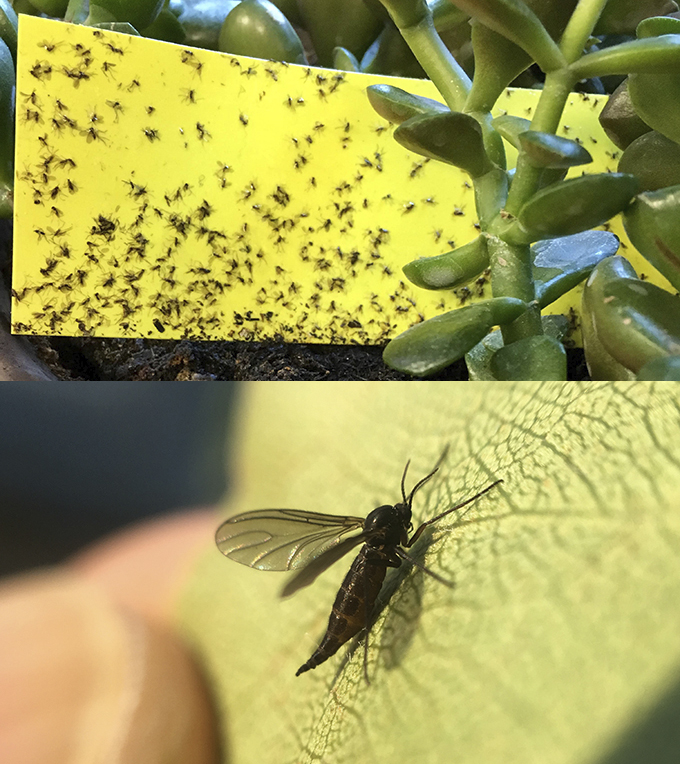
By Kait Chapman, Extension Educator in Lancaster County
While winter brings quiet to the insect world outside, there’s a chance we may still encounter some buggy creatures indoors. Small flies and gnats, for example, are common nuisances and pests, whether they be fruit flies in the kitchen, or flies in the drains.
Another small fly, the fungus gnat, is a common issue associated with a more inconspicuous source — overwatered potted plants.
WHAT TO LOOK FOR
Adult fungus gnats are small, about 1/8-inch long and black. Their maggots breed and develop in the moist soil of potted plants, where they feed on fungi and other organic matter. However, unless you’re trained to tell the difference between small flies, distinguishing them from others may be difficult. Be sure to reach out to your local Nebraska Extension office for help with identification.
HOW TO CONTROL
Getting rid of fungus gnats requires tackling both the adult flies and their larvae. Here’s how to do it:
Trap the Adults: Use yellow sticky traps strategically placed near the soil of affected plants to capture the flying adults.
Dry Out the Soil: Fungus gnat larvae thrive in moist conditions. Allow the soil to dry out between waterings, and make sure your pots have proper drainage to prevent water from pooling.
Use Biological Control: If the infestation persists, try a biological product containing Bacillus thuringiensis (Bt) specifically labeled for fungus gnat control. These products target larvae in the soil without harming your plants. Be sure to follow the product’s label instructions for safe and effective use.